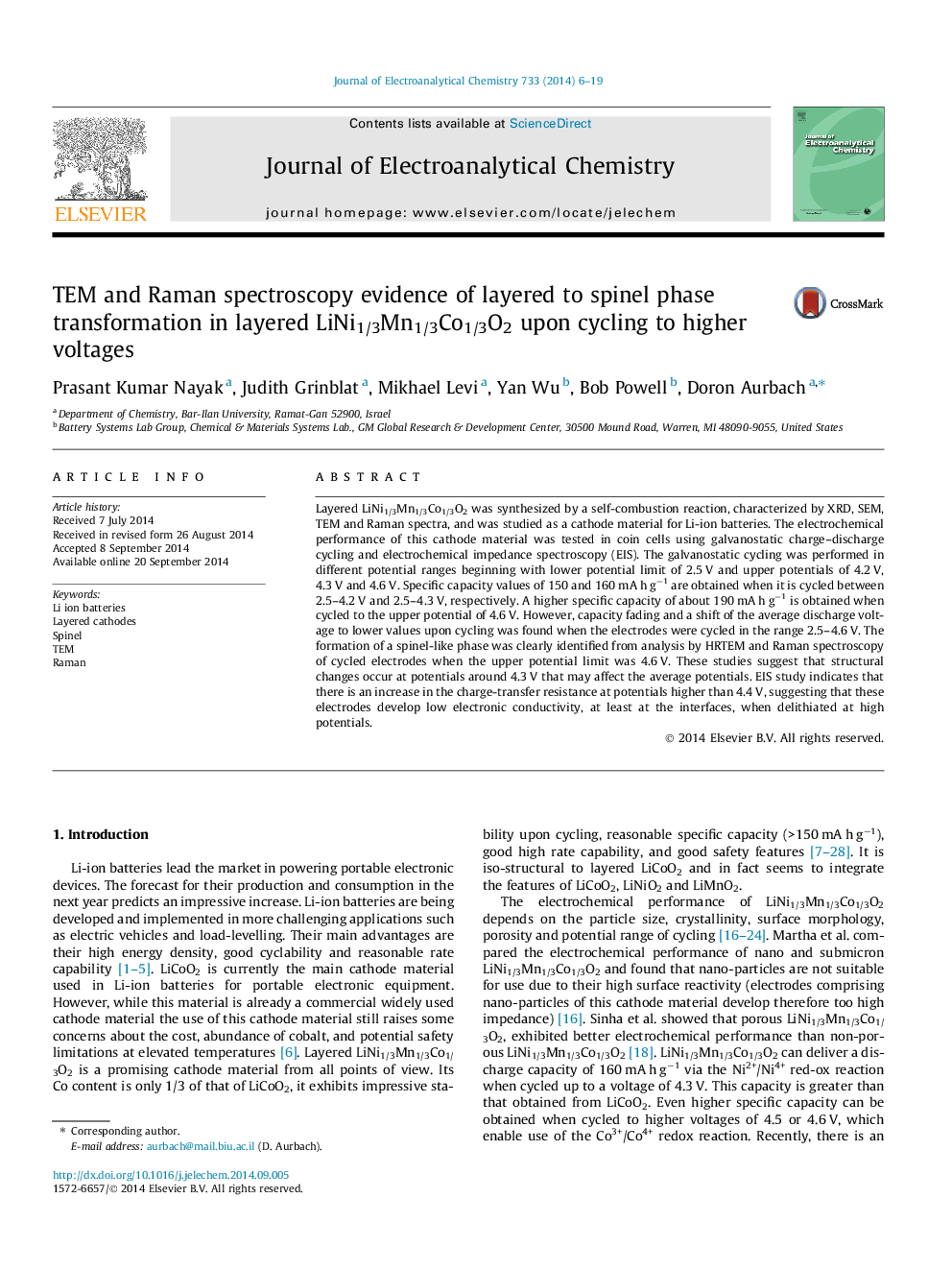| کد مقاله | کد نشریه | سال انتشار | مقاله انگلیسی | نسخه تمام متن |
|---|---|---|---|---|
| 218594 | 463208 | 2014 | 14 صفحه PDF | دانلود رایگان |

• A high capacity of about 190 mA h g−1 is obtained in the potential range 2.5–4.6 V.
• A stable capacity of 150 mA h g−1 is obtained when cycled in 2.5–4.2 V.
• A pronounced capacity fading is observed in the potential range 2.5–4.6 V.
• Also the average discharge voltage decreased to lower values in 2.5–4.6 V.
• Spinel phase is observed from TEM and Raman spectra when cycled up to 4.6 V.
Layered LiNi1/3Mn1/3Co1/3O2 was synthesized by a self-combustion reaction, characterized by XRD, SEM, TEM and Raman spectra, and was studied as a cathode material for Li-ion batteries. The electrochemical performance of this cathode material was tested in coin cells using galvanostatic charge–discharge cycling and electrochemical impedance spectroscopy (EIS). The galvanostatic cycling was performed in different potential ranges beginning with lower potential limit of 2.5 V and upper potentials of 4.2 V, 4.3 V and 4.6 V. Specific capacity values of 150 and 160 mA h g−1 are obtained when it is cycled between 2.5–4.2 V and 2.5–4.3 V, respectively. A higher specific capacity of about 190 mA h g−1 is obtained when cycled to the upper potential of 4.6 V. However, capacity fading and a shift of the average discharge voltage to lower values upon cycling was found when the electrodes were cycled in the range 2.5–4.6 V. The formation of a spinel-like phase was clearly identified from analysis by HRTEM and Raman spectroscopy of cycled electrodes when the upper potential limit was 4.6 V. These studies suggest that structural changes occur at potentials around 4.3 V that may affect the average potentials. EIS study indicates that there is an increase in the charge-transfer resistance at potentials higher than 4.4 V, suggesting that these electrodes develop low electronic conductivity, at least at the interfaces, when delithiated at high potentials.
Journal: Journal of Electroanalytical Chemistry - Volume 733, 1 November 2014, Pages 6–19